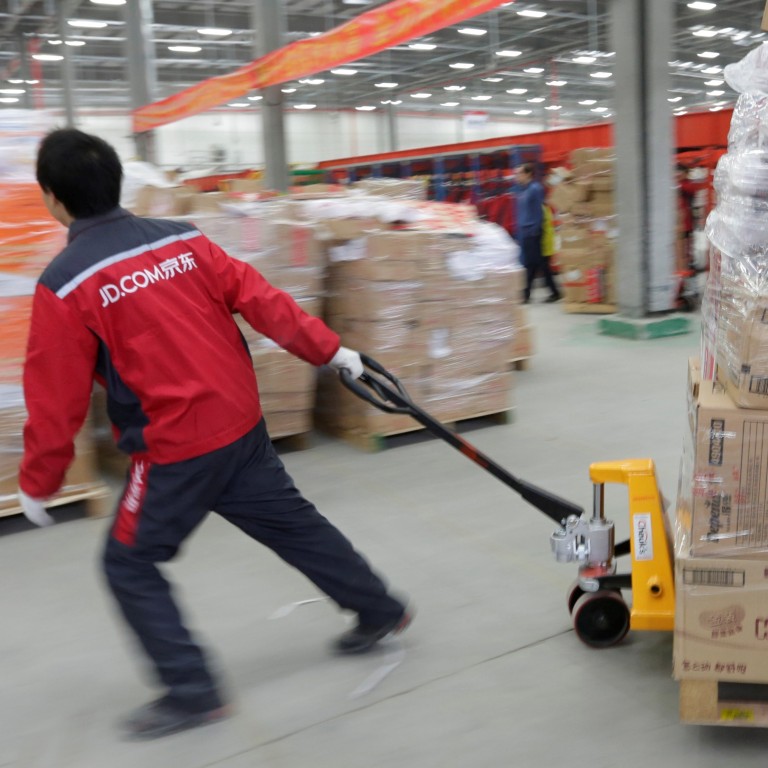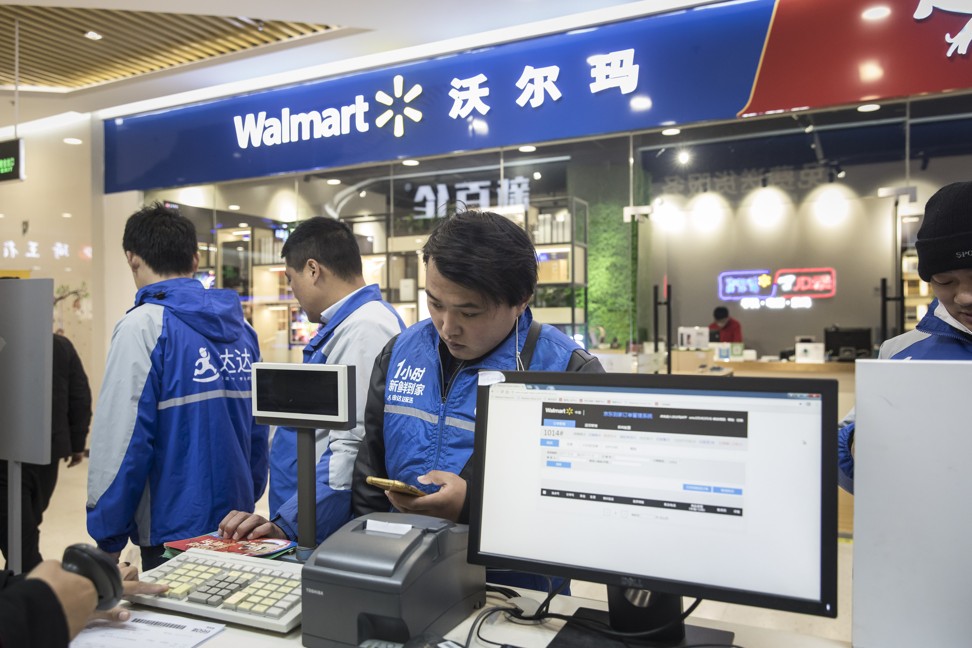
China’s JD.com adds more bricks-and-mortar stores to supply chain to speed up deliveries
- This programme currently includes 20,000 offline retail stores in 54 cities, including 175 Walmart hypermarkets
Online shopping giant JD.com is targeting delivery times of as little as 30 minutes across China by using various offline retail outlets, including Walmart, to directly get products to customers.
Beijing-based JD.com’s latest initiative forms part of efforts to improve the overall efficiency of its supply chain, according to Carol Fung, president of the company’s fast-moving consumer goods business.
“This programme cuts out unnecessary steps, improving efficiency for retailers, maximising resources, reducing costs and improving the customer experience,” Fung said in a statement on Tuesday.

These offline channels include supermarkets, convenience stores, some major brands’ own bricks-and-mortar shops and crowdsourced delivery platform Dada-JD Daojia. The programme initially covers items such as non-alcoholic beverages, beer, wine, rice and flour.
We see enormous potential to deliver more orders from offline channels in the future, and will roll out the programme in more cities around China soon
Average delivery time with the programme is two hours, but customers can receive orders as fast as 30 minutes, according to JD.com. The Nasdaq-traded company said brands taking part in the programme are likely to see improved store traffic and turnover rates.
JD.com enjoys strong second-quarter sales, rebounding from loss a year ago
New York-listed Alibaba, the parent company of the South China Morning Post, has already invested billions in various logistics services providers as well as bricks-and-mortar retail enterprises – including Sun Art Retail Group, Intime department stores and Hema supermarkets – so that it can get closer to consumers and deliver goods as fast as possible.
Watch: When JD.com launched a white-glove premium delivery service
At the more than 30 Hema supermarkets across China, for example, users can place grocery orders online, or shop offline and have their groceries delivered directly to their homes afterwards. Customers can also pick out fresh seafood at Hema and have chefs prepare them on the spot for a meal.
For Chinese beverage brand Nongfu Spring, an early partner in JD.com’s new supply chain innovation, the programme enabled 90 per cent of orders it received on June 18 – the final day of JD.com’s 18th anniversary shopping festival in China – to be delivered within two hours without adding staff at its Nongfu stations.
Alibaba and JD.com by far the dominant retailers in Asia-Pacific, study finds
Its daily orders have also increased about 20 per cent overall, according to Li Zhou, chief secretary of the board at Nongfu Spring.
“We see enormous potential to deliver more orders from offline channels in the future, and will roll out the programme in more cities around China soon,” Li said.
For more insights into China tech, sign up for our tech newsletters, subscribe to our Inside China Tech podcast, and download the comprehensive 2019 China Internet Report. Also roam China Tech City, an award-winning interactive digital map at our sister site Abacus.

